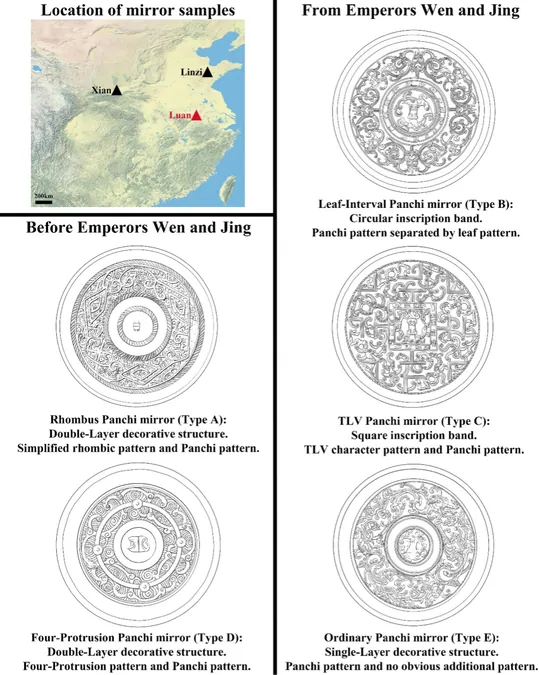
Unlocking Ancient Secrets: How Bronze Mirrors Highlighted Economic Boom in Early Han Dynasty
2025-09-17
Author: Wei Ling
Unearthing the Economic Ties of Ancient Craftsmanship
A groundbreaking study from the University of Science and Technology of China (USTC) reveals an intriguing link between the art of ancient bronze mirrors and the economic revival during the "Reign of Wen and Jing" in the early Western Han Dynasty. Published in the Journal of Archaeological Science, this research provides a fascinating glimpse into the socio-economic landscape of early Imperial China.
The Enigmatic Panchi Mirrors
At the heart of this study are the "Panchi mirrors," unique bronze artifacts that saw popularity from the Warring States Period through the Qin Dynasty and into the Western Han Dynasty. These mirrors are crucial in revealing the evolution of the mirror-casting industry during a time fraught with social upheaval and political transformation.
A Deep Dive into Bronze Artifacts
Researchers conducted an extensive analysis of 40 Panchi mirrors excavated in Lu'an, Anhui province, dating back to the years 221 to 141 BCE. Each mirror was meticulously examined for decorative patterns, inscriptions, chemical compositions, and lead isotope ratios.
Decoding Production Transitions
The findings unveiled two distinct types of mirrors, marking a significant technological transition in both craftsmanship and material sourcing. The first type, bearing influences from Chu-state designs, was crafted from a high-lead, low-tin alloy sourced from a temporary lead supply line that waned during the reign of Emperors Wen and Jing.
In contrast, the second type signifies the dawn of a classic Han mirror legacy, utilizing a low-lead, high-tin alloy with copper from diverse sources. This shift hints at a more standardized and diversified manufacturing approach, aligning with practices seen in the middle to late Western Han Dynasty.
The Impact of State Policies on Craftsmanship
High-precision dating situates this pivotal technological advancement squarely within the rule of Emperor Wen (180–157 BCE) and Emperor Jing (157–141 BCE)—an era defined by a "rest and recuperation" policy. This strategy fostered economic stability, providing fertile ground for handicraft industries like bronze mirror casting to thrive.
A Legacy of Innovation and Expansion
In summary, the research indicates that favorable governmental policies played a direct role in spurring industrial growth, ultimately paving the way for the economic and military expansion achieved under Emperor Wu. This study not only illuminates the artistic splendor of ancient mirror craftsmanship but also serves as a testament to how early Han governance shaped the technological and economic pathways of ancient China.

 Brasil (PT)
Brasil (PT)
 Canada (EN)
Canada (EN)
 Chile (ES)
Chile (ES)
 Česko (CS)
Česko (CS)
 대한민국 (KO)
대한민국 (KO)
 España (ES)
España (ES)
 France (FR)
France (FR)
 Hong Kong (EN)
Hong Kong (EN)
 Italia (IT)
Italia (IT)
 日本 (JA)
日本 (JA)
 Magyarország (HU)
Magyarország (HU)
 Norge (NO)
Norge (NO)
 Polska (PL)
Polska (PL)
 Schweiz (DE)
Schweiz (DE)
 Singapore (EN)
Singapore (EN)
 Sverige (SV)
Sverige (SV)
 Suomi (FI)
Suomi (FI)
 Türkiye (TR)
Türkiye (TR)
 الإمارات العربية المتحدة (AR)
الإمارات العربية المتحدة (AR)